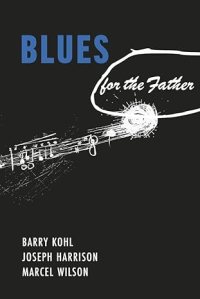Synopsis:
It’s 1957. Marion works for a Memphis record company, roaming the South in search of great songs from Black bands. He buys their songs to be re-recorded by White artists up north. Marion has two families, a White family in Meridian, MS, wife Christine and sons Lloyd and Linden and a Black family in Birmingham, AL, girlfriend Rosa and son Aaron. The pressures of maintaining these two families, attempting to guide and instruct his sons, and generating a return on an investment from his wealthy father-in-law Whitney, spur Marion on in his efforts.
Aaron, mixed race but appearing White, is a talented baseball player and will be a good prospect; however, Marion believes he must maintain the illusion he is White. But Aaron idolizes Black players and is inclined to be true to his origins. Son Lloyd, on the other hand, is a racist, thoughtless and selfish as shown when he forces himself on his girlfriend Becky. Lloyd soon joins the Ku Klux Klan, under the guidance of racist Whitney, the Grand Dragon of the local chapter. Linden, by contrast, resists racist pressures from his brother and grandfather, and maintains his kind nature.
Marion is of mixed race, and like Aaron, appears White. His black mother, who gave him up to a White family when he was a boy, is in a rest home, and Marion supports her there and visits her when he can.
Becky turns up pregnant, but Lloyd refuses to have anything to do with her or the child. A back-alley abortion clinic procedure results in her death, plunging her parents into grief. Aaron meets and takes a fancy to a Black girl. Marion, discovering this, has words with Aaron and winds up striking the boy during the argument. He apologizes, but damage has been done.
Rosa, educated in law but barred from practicing in the South, discovers a new destiny managing a girl group called the Jonettes. Marion initially encourages her but is dismayed when she announces her plan to move to Detroit, where new freedom and opportunity beckon to her and Aaron. Marion attempts to help Aaron understand the issues he faces with a visit to the rest home to meet his Black grandmother. However, the gesture backfires and Aaron realize Marion is living a lie and trying to pass that lie down to his own son. This alienates the two, but Marion begins to see things in a new light.
The Klan plans a bombing in Little Rock and persuades Lloyd to bring the bomb there. Then Becky’s distraught and vengeful father crashes his car into Lloyd’s truck, injuring Linden and setting off the dynamite with an explosion that destroys the truck and kills Lloyd.
Marion returns home for Lloyd’s funeral. Soon after, Christine receives word from the rest home that Marion’s mother has died. Christine never knew about this mother, and never knew that Marion was mixed race. She orders him out of the house. After a heated confrontation, Marion leaves.
With Rosa up north with Aaron, and having now lost his son Lloyd, and wife, as well as access to Linden, Marion returns to bury his mother and take stock of the changes he’s undergone. We end on Marion heading north to Memphis and a new life, whatever form that new life may take.
Favorite Lines:
“She could never let him abandon his hope. She looked down; she knew it wouldn’t be much longer before Aaron understood the cruelties of the world. They way he looked up at her lovingly made her understand she had to return it.”
“When you were poor, you had to make the best of what you had.”
“Know why it’s called the blues? The blues are about live, Aaron, about everything wrong about life. About the downs in life.”
My Opinion:
I received a copy of this book from the author in exchange for my honest opinion.
This story follows Marion Blackhurst, a white music producer who specializes in finding white publishers for blues tunes written by black musicians. Because his job requires him to travel quite a bit, he gets away with the fact that he has two families – a white wife and two sons who live in Mississippi and a black lover and son in Alabama.
The main focal point of this book is the color barriers that existed in the 1950s. While primarily related to the music industry, it also touches on racial issues in education and sports as well. I found the character writing of this story to be very well done. The characters were written to be very human with their own flaws, passions, strengths, and weaknesses. I enjoyed the hints sprinkled throughout that not all was as it seems for some of the characters which led to some speculation as to why they behaved the way that they did.
I can appreciate that this topic can be a difficult one to write about and thought that it was handled quite well with the narrative being told rather matter-of-factly. I also though that the two added plot twists towards the end of the story added a splash of surprise to something that was otherwise somewhat predictable. The predictableness is of not fault to the authors, the 1950s is just a well-known historical backdrop.
I would like to give a content warning that this story includes accurate depictions of what racism was like in the 1950s and also includes some descriptions of violence, including rape and police brutality. If these topics may be triggering for you, I would recommend not reading this book.
Summary:
Overall, I was pleasantly surprised by this book and was reeled in by the compelling character writing throughout. If you are interested in historical fiction specifically related to segregation in America in the 1950s including the color barriers that existed in the music industry, then this book could be for you.
